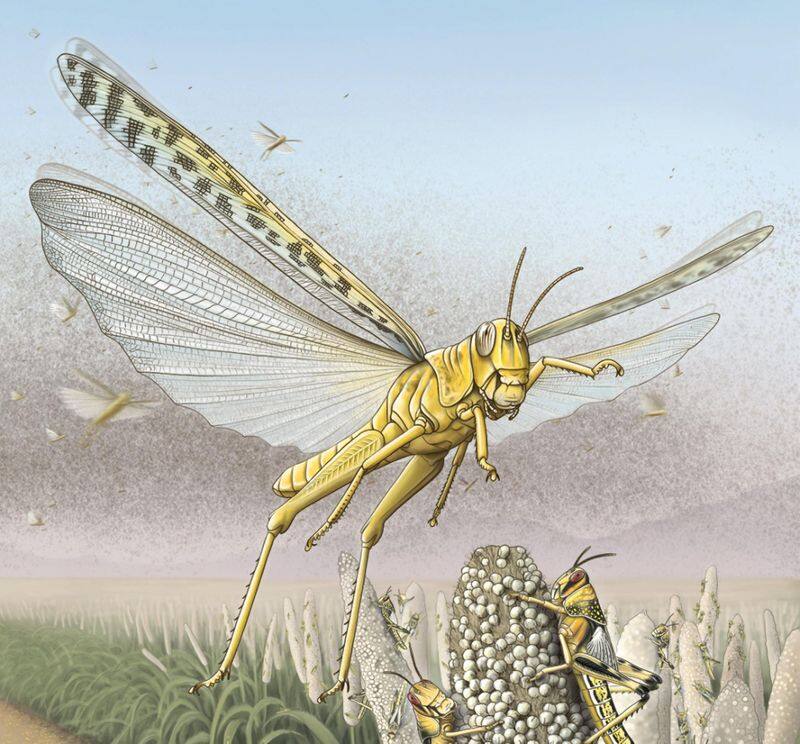Prime Minister Narendra Modi has reassured farmers that help will be given to those affected by locust attacks
Bengaluru: Prime Minister Narendra Modi has reassured farmers that help will be given to those affected by locust attacks.
"Help will be given to all those affected by the locust attacks that have been taking place in the recent days," he said in his monthly Mann Ki Baat address.
Also Read: How the desert locusts wreak havoc
As per government reports, it said on May 28 that a total of 377 spots covering 53,997 hectares have been covered under locust control operations since April 11.
Furthermore, locust control operations have been conducted in 11 districts of Rajasthan, 24 of Madhya Pradesh, three in Maharashtra, two each in Gujarat and Uttar Pradesh, and one in Punjab.
In spite of government assurances, the attacks are far from over.
Also Read: Zaira Wasim quotes wrath of God as locust attacks increase
It is reported that several successive waves of locust invasions can be expected until July in Rajasthan with eastward surges across northern India as far as Bihar and Odisha, followed by westward movements and a return to Rajasthan with changing winds associated with the monsoon.

In simple terms, a locust or desert locust is a short-horned grasshopper. These locusts attack in swarms, that is they form a group, and in each swarm, they can number up to 80 lakh! And this is a phenomenal number. They feed together and breed together.
Interestingly, their life span is not beyond 3 months!
Another interesting thing about these locusts, or to be precise, desert locusts, is that they can they are voracious eaters and can eat food that is equal to their body weight.
And in what seems shocking and perhaps, even amazing is that they can eat up food meant for 2500 people on a daily basis!
And as they feed, they also breed vigorously. It is said they can increase their population by 16,000 times in their breeding seasons!
These locusts, we must tell you, are very smart creatures! They are blessed with the ability to identify moisture and greens and roam around in search of them. They also follow wind direction in their search for greens!
Last Updated May 31, 2020, 3:21 PM IST









![Salman Khan sets stage on fire for Anant Ambani, Radhika Merchant pre-wedding festivities [WATCH] ATG](https://static-gi.asianetnews.com/images/01hr1hh8y86gvb4kbqgnyhc0w0/whatsapp-image-2024-03-03-at-12-24-37-pm_100x60xt.jpg)
![Pregnant Deepika Padukone dances with Ranveer Singh at Anant Ambani, Radhika Merchant pre-wedding bash [WATCH] ATG](https://static-gi.asianetnews.com/images/01hr1ffyd3nzqzgm6ba0k87vr8/whatsapp-image-2024-03-03-at-11-45-35-am_100x60xt.jpg)


